Karen and I explored Spain from September 10 through October 2. Like the savory dishes Spaniards serve with drinks in bars and restaurants, I’ll be dishing out small portions of the treats we discovered in a series of posts to avoid overindulgence.

We left Chattanooga Airport with our backpacks, one carry-on bag apiece, and keen anticipation for discovering the wonders of southern Spain and meeting the people who live and work there.

Following a circuitous route mandated by using airline miles for my seat, we arrived in the Mediterranean city of Barcelona at 10 am their time in a mere 23 hours of traveling. This autonomous community of Catalonia is home to 1.6 million residents. It is known for its beaches, the whacky creations by the brilliant engineer and architect Antoni Gaudi, La Boqueria Market, the Columbus Monument, Museums, Montjuic Hill, and exhilarating nightlife.
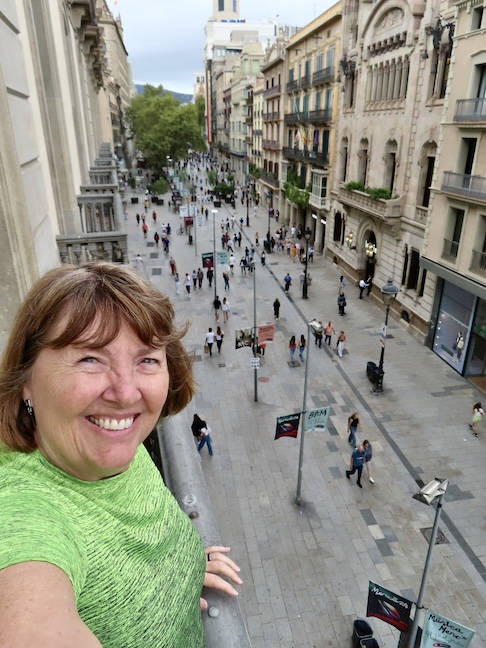
Our room with a balcony in Hotel Portal de Angel was one block from the nefarious Les Rambles, a tourist and pickpocket-infested major thoroughfare. Of the 78 million people who walk “La Rambia” yearly, only twenty percent are from Barcelona. Lined with iconic buildings and trees, the pedestrian-friendly street is filled with shops, tapas bars, street performers, and some of the best people-watching on the planet.
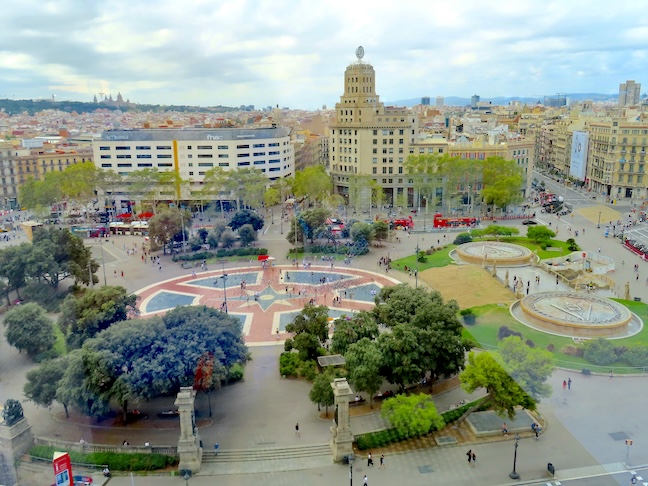
We ate lunch in the El Corte Ingles Department Store on the seventh floor overlooking Placa de Catalunya. The open Plaza is the hub for exploring the city. The store’s insanely popular cafeteria provided our first encounter with Spain’s famous chocolate con churros, a hot cup of pudding-thick chocolate you dip warm churros into and then finish scarfing up every last drop from the cup with a spoon. Fabulous!
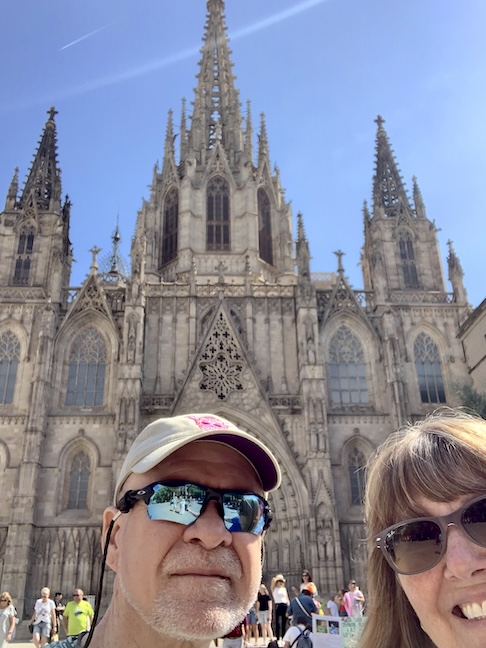
A five-minute walk from our hotel in the Gothic Quarter of Barcelona’s Old City stands the Barcelona Cathedral, built in stages from 1298 and completed in 1448. It is the seat of the Archbishop of Barcelona and features gothic and Neo-gothic architecture.
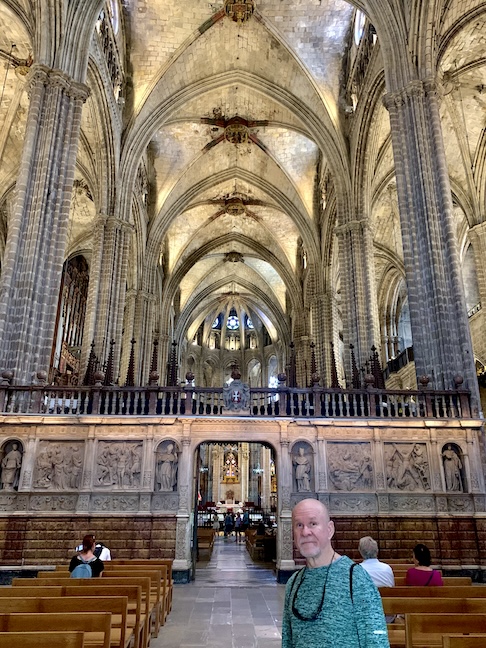
Fourteen euros will buy you a ticket into this impressive church and access to its rooftop views. 95% of Spaniards are Catholic and their elaborate churches were cross-shaped with the apse containing the sanctuary and main altar on the east end of the cross’s top and the choir in the middle separating the riffraff in the nave from the clergy and affluent parishioners.

The elaborately carved chancel is occupied by the clergy and choir during worship services.
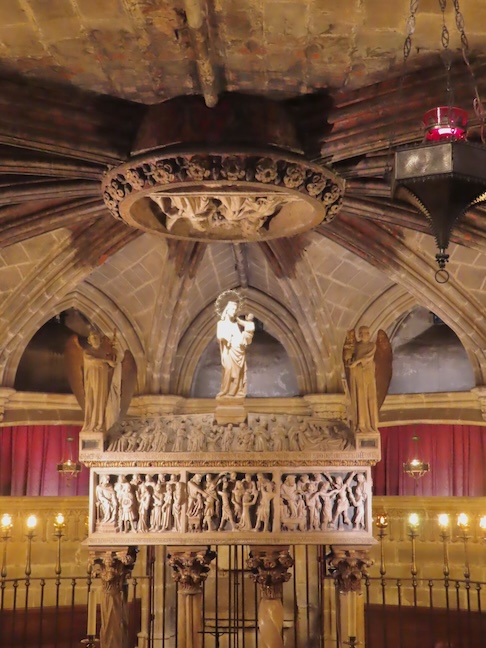
Beneath the altar in an ancient crypt is the marble and alabaster sarcophagus of Santa Eulalia, a 13-year-old Roman Christian virgin martyred in Barcelona for publicly confronting the Roman governor for persecuting Christians in 303.

We logged 16,291 steps wandering through the winding streets of the Gothic Quarter and rewarded ourselves with tapas and wine at La Vinateria del Call, which is one of the oldest wine bars in the city and darn hard to find in the narrow lanes of the former Jewish Quarter, but worth the search. We found Spain infatuating and were eager for more.

